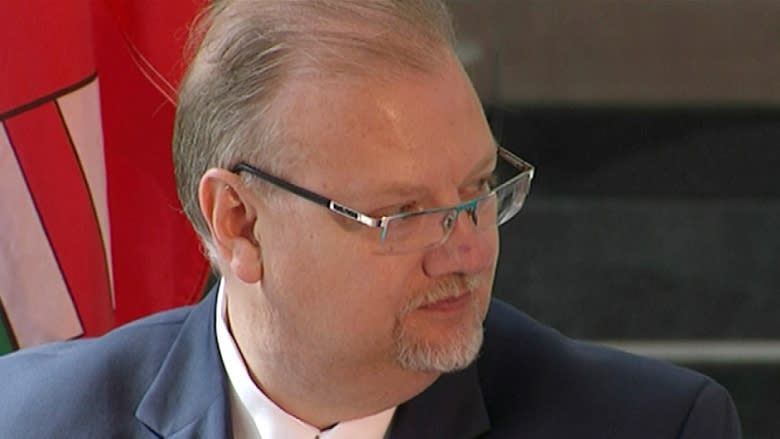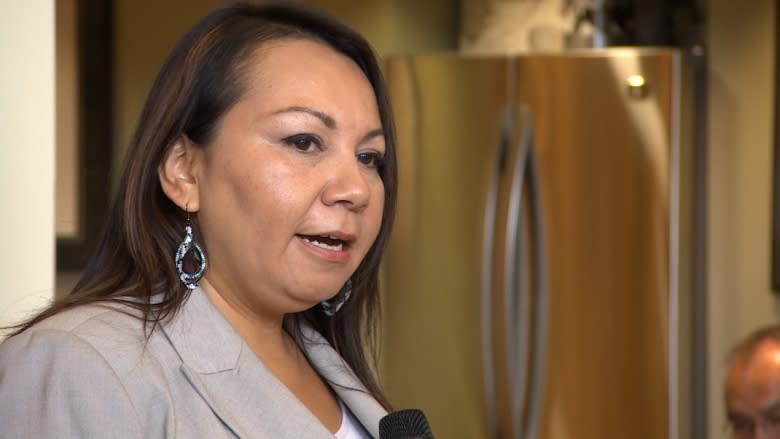Tories tell Manitoba health regions to find millions in savings in 2017
The Winnipeg Regional Health Authority has been told by the province to find more than $80 million in savings in 2017-18, CBC News has learned.
The WRHA confirmed Wednesday that as part of the province's push to ensure no health authority incurs a deficit, it has been given a target of finding $83 million in savings in its $2.6 billion budget.
The province's other four regional authorities have been handed down individual targets of the their own, including $6 million for the Northern Regional Health Authority, according to a memo sent to NRHA staff last week.
The NRHA, which serves over 74,000 northern Manitobans, outlined how it will attempt to find the savings, including through vacancy management, only providing funding for insured services, and reviewing transport requests for northern patients.
In 2015-16, the NRHA spent over $230 million providing health care to a region that spans almost 400,000 square kilometres. A review into the use and costs of medevacs is also currently underway, the memo notes.
"At this point in our planning, it is unknown what impact there will be on programs and positions," NRHA CEO Helga Bryant said in a memo dated Feb. 24, which was provided by the Opposition NDP and tabled during the opening session of Manitoba's legislature on Wednesday.
The NRHA also serves 26 First Nations communities, including some of Manitoba's most remote First Nations.
Manitoba Keewatinowi Okimakanak Grand Chief Sheila North Wilson told CBC News she was not consulted by the NRHA or government on its funding decisions.
"At the very least they shouldn't be decreasing spending and they should be consulting with us as First Nations people. We can tell them where we see deficiencies, and they are many deficiencies," she said, pointing to the expenses incurred by medevacs from remote communities.
"They don't invest in prevention programs."
Paul Thomas, a professor emeritus of political studies at the University of Manitoba, said controlling spending in the health-care system is a difficult task for governments. Savings can be found by cutting executive positions or middle management, but there is always the concern it will affect services, he said.
"Demand always exceeds supply and it is very hard to turn people away when the issue is life and death," he said.
"At some point, if you cut too deeply, you are cutting into services and people will notice that, and wait times will go up."
The directives to health authorities come on the heels of a much-anticipated review of Manitoba's health-care system by consultants KPMG.
The review was ordered by the Progressive Conservatives to identify efficiencies, and the Tories say it will influence decisions made in the upcoming budget.
The interim copy of the review has been in the hands of the Pallister government since late January and the final version is expected this month.
'No magic rabbit' for controlling costs
Thomas said the directive has the potential to pressure the authorities to find savings, but only in small doses.
"There are simply no easy choices, no magic rabbit to be pulled from a hat that will solve this problem," he said. "[But] if you squeeze hard enough, you'll squeeze out some productivity and savings."
CBC news reported on Wednesday that the directive for the authorities to balance their budgets came down from Health Minister Kelvin Goertzen in mandate letters to the authorities' boards of directors in December.
Goertzen was not available for comment, but both he and Premier Brian Pallister has been steadfast in their mantra that the health care system is under significant pressure — costs continue to rise and the federal government has so far refused to budge on its plan to raise health transfers by three per cent.
"The financial challenges faced by our government cannot be understated, especially with the federal share of health care funding continuing to erode," wrote spokeswoman Amy McGuinness in a prepared statement.
"We expect all regional health authorities, including the WRHA, to take the steps necessary to provide patients with quality care while balancing the need to ensure that their operations are managed in a way that is sustainable in the long term."



